MUSIC IN A QUIET COURTYARD
MUSIC IN A QUIET COURTYARD
heard by Norman Warwick
The timple (below) is a traditional five-string plucked string instrument of the Canary Islands. It started being manufactured in the 19th century.

In La Palma island and in the north of the island of Tenerife, many timple players omit the fifth (D) string, in order to play the timple as a four-string ukulele, though this is considered less traditional by players and advocates of the five-string version. The players of the four-string style, in return, say that they are simply playing the timple in the old-fashioned way from before the time when a fifth string was introduced in the late nineteenth or early twentieth century The common tuning is GCEAD.
Notable timple players (timplistas) are Benito Cabrera (Lanzarote), Germán López (Gran Canaria), José Antonio Ramos, Totoyo Millares, and Pedro Izquierdo (Tenerife).

There is, though, so much more to learn about the sight and sound and history of this lovely instrument. In fact, the wonderful Timple House Museum in Teguise, (right) on Lanzarote, is a space dedicated to the music and traditional culture of the Canary islands, with its centre of attention being the that tiny instrument with the loud voice, the Timple. This small, stringed instrument has become one of the most deeply rooted sound symbols of the entire archipelago. This site, the original standing of the Villa of Teguise, with its collection of artisans, played a fundamental role in creating awareness throughout the rest of The Canary Islands. The instrument became not only a symbol, even a spokesman, perhaps, of Lanzarote´s identity, but also a method of communication with other cultures and aesthetic developments introducing tradition to modernity.

Today, Villa De Teguise, now known as The Timple House Museum, is a place that contains a functioning museum, study centre and cultural space. It is here that scholars work to study and preserve the traditional culture of The Canary Islands to enable us to disseminate knowledge beyond these islands to the world at large. The centre is now directed by one of the islands´ most loved timple players, Benito Cabrera (left) .

The museum centre was brought into existence by help from the general Directorate of Co-operation and Cultural Heritage of the Government Of The Canary Islands, and is currently managed by The City Council Of The Villa De Teguise. Visitors to the museum will see a wide collection of drafts and blueprints and even of some timples under construction as well, of course, as many of the beautifully finished articles. They will also find instruments from other countries, adding an extra dimension revealing how the instrument has been adapted into cultures from other, diverse parts of our planet. Museum visitors will also learn much about the folklore and artisanship of Teguise as they contemplate the various levels of the construction process whilst also enjoying various audio-visual elements within the framework of a heritage environment of great architectural interest.
To step through the building´s impressive huge, wooden doors, is to step inside Doctor Who´s time machine. How can there possibly be so many rooms of such height and breadth and length inside that building we were standing outside a moment ago? Visitors can wander the halls at their leisure, marvelling at the history in the walls and the stories in each and every artefact.
Various areas of the Timple House Museum are dedicated to different cultural aspects, and so there is space dedicated to the history of the municipality. The room dedicated to the timple is also the location of pieces created by the artisans of Teguise, as well as timples created by wood-workers from other Canary Islands. One room holds a collection of other instruments from different parts of the world having some kinship with the timple.
As well as these rooms there is even a small concert hall with excellent acoustics-
The Timple House Museum also offers a series of scheduled activities such as concerts, courses and talks etc. We have attended many glorious concerts in that small hall and they have certainly all justified the venue´s claim to complement the arts and culture offer of one of the island´s oldest municipalities and to contribute to the greater monumental value of The Canary Islands as a whole.
We re-visited the museum on Sunday 19th September 2021 for the first time since lockdown almost two years ago, ostensibly to visit the famed Sunday morning Teguise Market, which had re-opened only a few weeks earlier. It had, for years, been a maze of lanes of stalls snaking through, around and beyond the square in front of the Timple Museum and there would inevitably be an overspill of visitors into this house of music.
When we noticed the market had been relocated to a slightly less central square, further away from the museum, we wondered about whether that might have any negative impact. However, entry protocol, post-covid means only so many people at any one time can be in the designated open air market area, and many people, rather than join the long queues waiting to enter, seemed to wander off to explore Teguise, and the now quieter square outside the Timple House Museum made the venue even more enticing. Like many others we decided to call in again at the home of the timple and walk across to the market later on when things might be quieter and access a bit quicker.
The first thing we noticed as we stepped inside was that there was a concert scheduled for noon, still about two hours away. Thinking that, because covid demands pre-bookings, we wouldn´t have a cat on Lanzarote´s chance of being admitted, we began what we expected to be one of those lengthy Spanglish negotiations with the lady behind the desk. Her eyes lit up, though, when she saw Lanzarote Information´s title on my press card and she called in an official interpreter to help. It turned out the concert would be in the courtyard at the back of the building, a part of the premises we had never seen before. We had our T.I.E cards, she wrote down our numbers and reserved two tickets for the free admission event.
We passed a couple of hours having breakfast at La Bodego Del Medio, a lovely little side-street bar, served by young, energetic and friendly staff all seemingly as loved by locals as by tourists, so there was a nice buzz to accompany our Tortilla Espanol and Americanos in the sunshine. We then took a post breakfast stroll further into town and had two small bottles of Tropical Beer, beautifully frosted.
Back at the Timple House Museum we picked up our reserved tickets and the helpful lady showed us to our two fold-up wooden chairs in an exquisitely stoned courtyard with a raised platform stage in front of us and a sun shading canopy of leaves overhead. There were around forty similarly segregated seats, in arrangements and permutations of twos, threes and fours and by the time the concert began all the seats were occupied.
The two musicians were introduced by a gentleman who seems ubiquitous at these kind of events. I´m ashamed to say I don´t know his name although I have occasionally spoken to him in the past, very briefly, before one of us surrenders to the huge difficulty of not knowing one word of what the other is saying. He is, though, a master not only of ceremonies but also of his craft. He is a calming presence who puts both artists and audiences at ease, speaks in a conversational and light-hearted manner, but seems to be meticulously researched and speaks directly, albeit it in a manner that draws in the whole audience, to any VIP guests such as The Teguise Councillor For Culture, who presented a commemorative framed poster to the musicians at the end of the concert.

It transpired that the musicians were the guitarist Juan Sebastian Ramirez and the timple player Abraham Ramos (left) . They gave us an hour of sublime playing, of which more later, and built an obvious rapport with everyone else in that courtyard: sound engineers, master of ceremonies, Councillor For Culture, and the proprietors and staff of the venue who had spilled out to listen, and the audience of the general public, including tourists simply fortunate enough to have stumbled into the venue on this day.
But it was all about the music, and how the baton never wavered as it was passed from one instrument to the other. I lost count of the number of glorious runs finger-picked on the timple by Abraham, and yet he also strummed brilliantly, too, with the wide splayed hand action employed often by banjo and ukelele players. In his quietude there was much to admire as his notes shone as clearly as the sun on the sea. This music was, surely, the Stars On The Water Rodney Crowell wrote about. I know players of some instruments who get hung up on terms like claw-hammer and flailing but I don´t even know if such terms are meaningful in timple playing. Abraham nevertheless seemed to employ at least two very different techniques to create his beautiful sounds. Even his frenetic ´flailing´, employed to create depth and percussion, was so perfectly played that it never drowned out the contrapuntal runs being delivered by Juan Sebastian, who also painted all hues of light and shade on his guitar. He was, in fact as effective when using the body of his instrument for percussive sounds as he was when picking or strumming the strings.
All this was delivered over a superb and perfectly managed sound system that was perhaps one we were already familiar with. It looked and sounded like a system the usual pan-pipers employ when entertaining market goers, but there were those two pan-pipers sitting by the sound-set and twiddling the odd button now and then.

Throughout the concert I was put in mind of a unique album by my favourite singer writer, former legendary banjo player turned guitarist, John Stewart (right). After years as a vocalist and banjo player John recorded more than forty voice and guitar albums as a solo artist, and one, perhaps two, exquisite solo instrumental albums. He used loops and all sorts of studio technology to create an incredible multi layered sound similar to that of these two players, playing live with no enhancements.
These two young Canarian artists were today playing music from their recently released album, El bailar de Los Callaos, a collection of six of their new creations. (below)
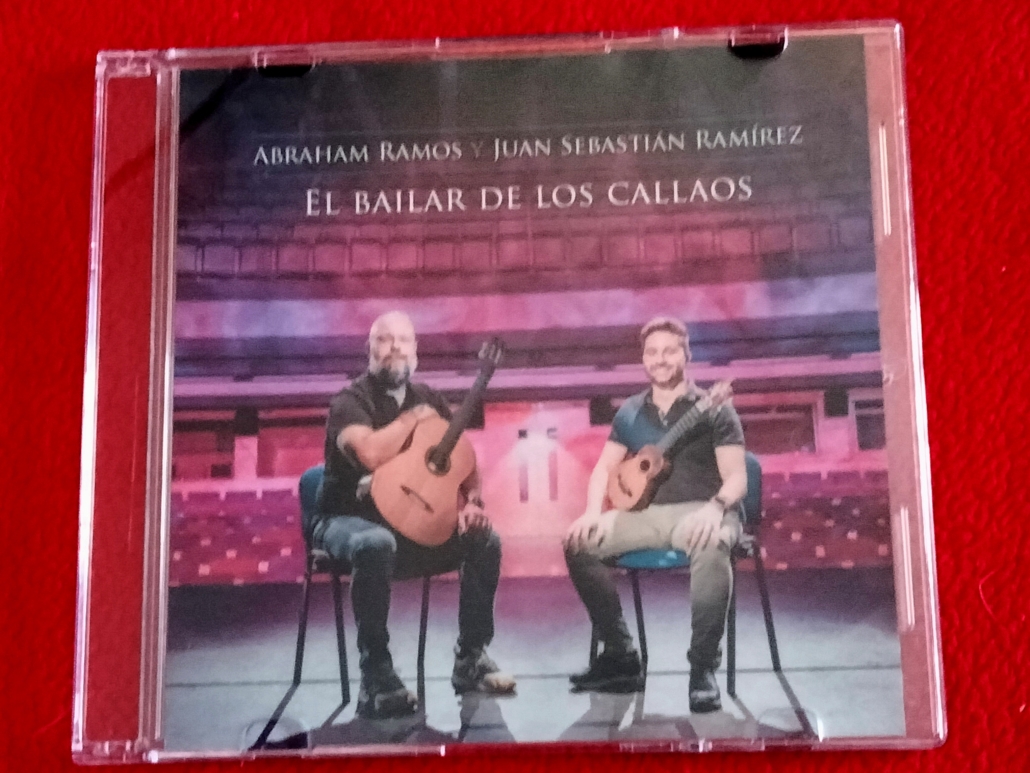
The presentation concert began with Magios, and would subsequently include Chiquillería, Kosha, Sobre lienzos, Kunana and the Bailar de los Callaos, these compositions being interspersed with others recorded in previous works. Abraham and Juan Sebastián paid tribute to three great masters of timples, who had signposted their way; José Antonio Ramos, Domingo Rodríguez ‘El Colorao’ and Benito Cabrera.
Today, these craftsmen therefore included more traditional themes such as folias, tajaraste, drum playing and, being in Lanzarote, could not miss the emblematic zaranda and the isa. Abraham and Juan Sebastián explained in detail, each of the themes they interpreted. .
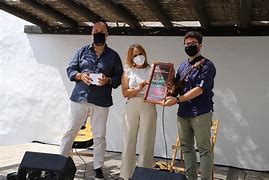
As Juan Sebastian and Abraham stood to accept their applause the enthusiastic audience asked them to continue. These requests drew more than one encore. The Councillor For Culture and Celebrations, Nori Machín, was present at the concert and delivered a poster to the musicians. In addition, she received the album as a token of appreciation (right).
After the concert, Abraham and Juan Sebastián went inside the Timple House-Museum, where they patiently and humbly signed copies for the many purchasers of whom your reporter, and his wife and photographer aka Dutton The Button, were two. I slipped them a card and introduced myself so we might be able to fix up an e mail interview with them in the near future.
There had been jokes during the concert about whether this new album is on Spotify, and although Spotify was the only ¨Spanish´ word I understood, I somehow felt the conversation was suggesting the album, if not there yet, will shortly be available through that outlet.
Treat yourself, have a listen, and if you haven´t already paid a visit to the Timple MuseumI´m confident you will find your first visit very rewarding. To offer you further incentive Sidetracks And Detours can announce the details of some forthcoming events at this fabled venue.
Over the coming several months, Museum Director, Benito Cabrera, will present up to seven “micro-docus” (small documentaries), explaining various aspects related to timple,. These micro-docus will be published on Youtube and can be seen on all the Timple Museum´s social networks and on the Museum’s website, as well as on the website of the City council of Teguise, with the aim of inviting you to a virtual visit to the museum, in addition to generating didactic content to support educational centers.
It is the live music that is so enchanting for the casual visito, perhaps, so here are some firm dates for your diaries.
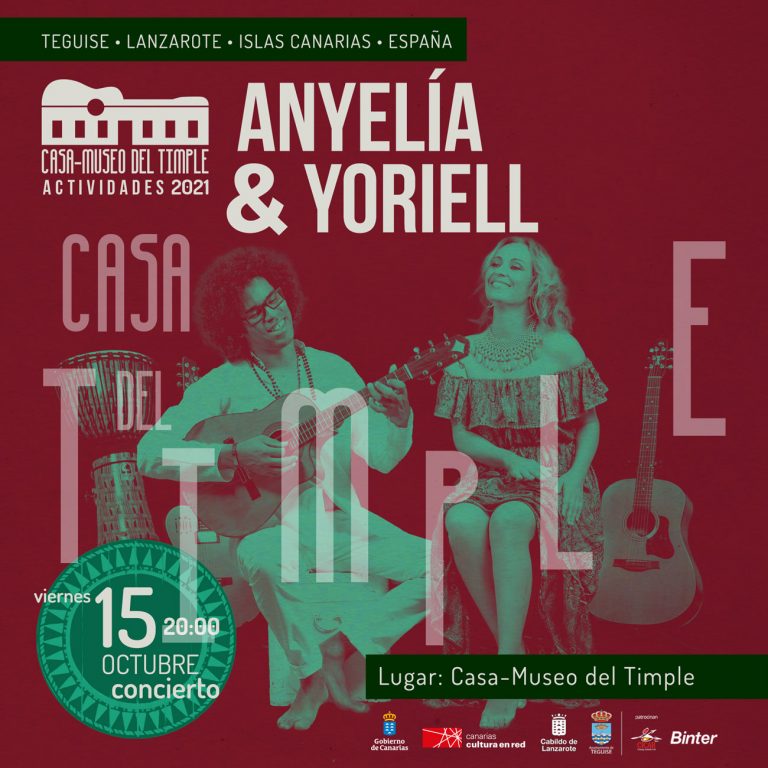
On Friday 15th October in The Timple House Museum at 8.00pm there will be a concert by Anyella & Yoriell, (left) who deliver in a style that steps from pop to reggae to Bachata, Reggaeton, Salsa, Ballad, Bossa Nova, Calypso, and Flamenco fusion in a wide range of fresh rhythms and world music. These two young composers wish to transmit a message of love accompanied by the exquisite melodies and current rhythms that encourage audiences to move and dance whilst enjoying the sounds.

On Friday 5th November at 7.30 pm the Timple House Museum hosts timple soloist Gabriel Cubas, (right) bringing us a great sample of his repertoire, in a performance called Timpleando
In the run up to Christmas, a noon event at The Timple House museum on Sunday 12th December offers us the Menudos Timplistas, (below) a new delivery from the best of the timple schools on Lanzarote and The Canary islands.
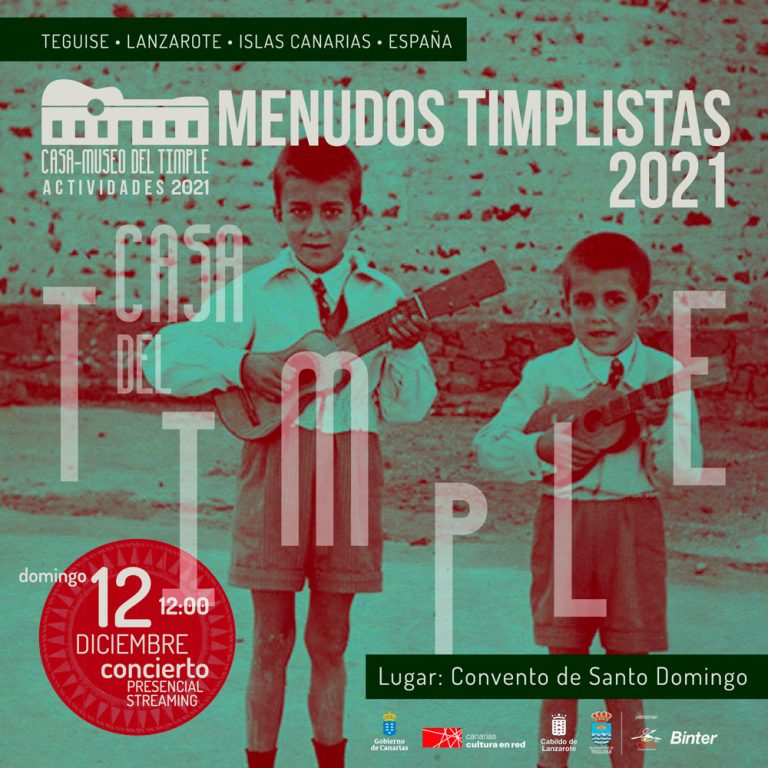
Of course we advise you to check usual sources for details and to check out the venue web site at https://casadeltimple.org
The prime source for this article was a a piece written by Francisco Jose Navarro of La Voz
In our occasional re-postings Sidetracks And Detours are confident that we are not only sharing with our readers excellent articles written by experts but are also pointing to informed and informative sites readers will re-visit time and again. Of course, we feel sure our readers will also return to our daily not-for-profit knowing that we seek to provide core original material whilst sometimes spotlighting the best pieces from elsewhere, as we engage with genres and practitioners along all the sidetracks & detours we take.

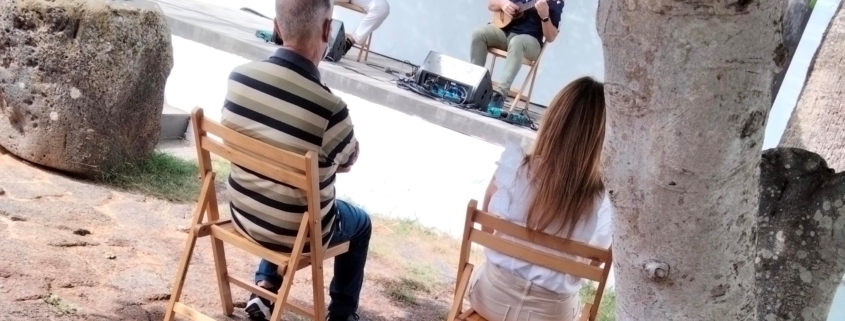


Leave a Reply
Want to join the discussion?Feel free to contribute!